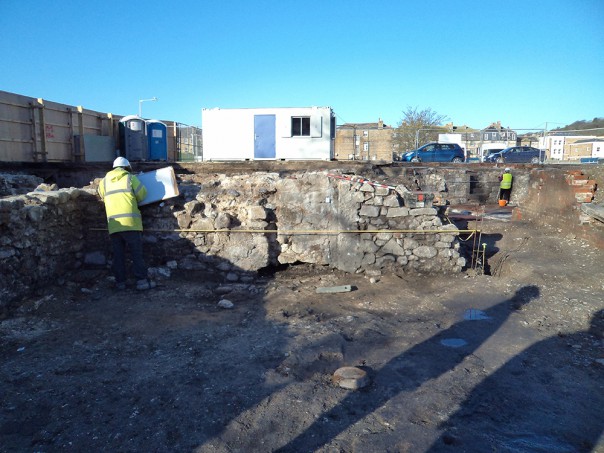Again there may be others within the Centre who will be giving lectures to interest groups in Kent over the next couple of months, but I thought I would just mention two before going on to other things. Firstly, next Wednesday Dr David Grummitt will be giving a talk entitled ‘Agincourt 1415: the legacy of a Lancastrian triumph’ to the Canterbury Historical and Archaeological Society. Like most of the Society’s other lectures, this will take place at 7.00pm in Newton Lecture Theatre Ng03, Canterbury Christ Church University and all are welcome, the Society charging non-members a small fee. Obviously this links to one of the major anniversaries this year and my second notice relates to an anniversary too. Next February Dr Martin Watts on Thursday 4 February will be giving a talk on the battle of the Somme and its implications at St Peter’s Methodist Church on behalf of the Canterbury Festival. Martin is busy undertaking more research on this topic and will focus on the experiences of the two Kentish regiments: the West Kents and the Buffs. Both look exceedingly interesting so if you are also interested do please go along, booking for Martin’s talk is through the Canterbury Festival Office. Martin will be putting details of his talk on the university’s web events calendar.

Although not directly related to the Centre, but certainly involving Canterbury Christ Church, a number of important events have been taking place recently. Firstly, Canterbury Archaeological Trust has just published a book on the discoveries relating to the university campus site, which during the Middle Ages was the service precinct of St Augustine’s Abbey. This volume by Alison Hicks offers an exceedingly valuable analysis of the various often small archaeological investigations across the university. Piecing all these disparate investigations together has been a mammoth undertaking and could only have been achieved by someone who had worked on Canterbury for many years. Moreover, having been one of the two authors of the St Gregory’s Priory volume, published some years ago, Alison’s understanding of monastic Canterbury is considerable, especially if you also add in her oversight of the Austin friary (Whitefriars) excavations. This ‘dig’ will be published soon, or at least the medieval volume, which is a considerable achievement and one that I’m looking forward to immensely. Furthermore, as well as the campus archaeological book, archaeologists are hard at work on another Christ Church site: the old garage on the ring road next to Augustine House. This is already providing important discoveries about the Norman castle’s outer bailey, particularly a truly massive ditch, and I’ll come back to this another time.
Such large archaeological excavations by Canterbury Archaeological Trust are not just happening in Canterbury, and I was fortunate enough to visit the new phase of the work the Trust is carrying out in St James’ parish in Dover. So as well as delivering a second batch of ‘Medieval Canterbury Weekend’ flyers to Dover Museum, I had a guided tour of the excavations by Keith Parfitt, the head of the project. This was a very useful exercise from my perspective because unlike the previous sites nearby that had primarily yielded small medieval buildings, this new site has a large late medieval cellared building – see photo – which Keith believes can only have been a merchant’s house or similar. Whether I will be able to locate its late medieval owner/user is perhaps very optimistic but I should at least be able to ascertain some possible candidates from the probate, charter and civic documentary records. I’m looking forward to working on this project because it is several years since I did anything specifically on the Dover medieval records and it will be good to get back to them.
In the mean time I shall continue to work on the fifteenth-century Canterbury records to try to finish off a couple of articles, one on women as independent business women during the century which is yielding some interesting results, and one on the Fauconberg Rebellion and its implications for certain individuals in the city. Regarding the former I thought I would just mention a couple of findings to give you an idea of what was happening in the city in 1415. For example, Agnes Hoo was the plaintiff in a case where she accused Margaret the widow of Geoffrey Palfreyman of forcefully entering her house in Worthgate ward and taking away clothes, towels and other household goods to a value of 40s. Moreover in the same year Gilbert Pynchebek, a limeburner presumably from Ridingate ward, brought an action against Joan Whetefeld the prioress of St Sepulchre’s nunnery, where he alleged that she had detained lime worth 13s4d. This was not the only case in which Joan Whetefelde was involved because some months earlier she had been the plaintiff in a case against a local hackneyman called Edward Cook, and the defendant in a case involving Thomas Lane a burgess of Canterbury. The involvement of the head of a local religious house was not that unusual, although the prior at Christ Church seems to have been far more litigious than either the prior at St Gregory’s or the abbot at St Augustine’s, a consequence of the cathedral priory’s position perhaps and its far greater integration into the life of the local citizens.
To finish off this week, I thought I would mention a couple of meetings that have and will involve Centre personnel. The first took place this week and involved thinking about putting together a set of web interactive maps covering a wide range of Kent historical and archaeological themes, such as pilgrimage and travellers’ routes more generally. The other meeting is due to take place next week and will consider ways to enhance the activities involving the Centre beyond those already planned for 2016. So I should be able to report on these more fully next week.
 Centre for Kent History and Heritage
Centre for Kent History and Heritage Matthew Crockatt
Matthew Crockatt 719
719

